TALKS LIVE AND ONLINE
For online talks, Ian especially recommends:
Charles Dickens Conjurer
The Art Of Trickery: How Magicians are seen in Paintings, Prints & Cartoons
The Century of Deception: The Birth of the Hoax in the Eighteenth Century
History of Cartoons: from William Hogarth to Private Eye
Ian has a total of ten talks, divided into three sections: three talks on Satirical Prints & Cartoons; three talks which include some performance of magic; and four talks on 18th Century hoaxes. He has given numerous talks to The Arts Society, Rotary, Probus, WI, U3A and history & literary societies.TALKS ON SATIRICAL PRINTS & CARTOONS
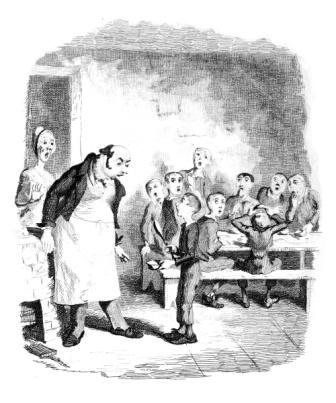
George Cruikshank: The Man Who Drew Oliver Twist
George Cruikshank is now best known for his brilliant drawings for Charles Dickens's Oliver Twist. But this is to do his prodigious skills and work output a disservice. Cruikshank moved effortlessly from biting satirical prints of the Prince Regent and Napoleon in the Georgian era through to producing exquisite engravings for numerous books and journals in Victorian times. Adapting his talents both to new printing technology and the demands of the reading public, he is considered by many to be the greatest illustrator of the 19th century. His personal reputation hasn't survived quite so well, partly through his obsession with temperance in later life and the fact that when he died, aged 85, it was discovered he had fathered eleven illegitimate children with his mistress.

James Gillray: The First Ever Political Cartoonist
James Gillray succeeded William Hogarth as the primary satirist of the 18th century, not only taking caricaturing to new heights but also refining the format of the cartoon to one that we are now familiar with. He took no prisoners in his depictions of politicians and the royal family alike. Combined with his brilliant draughtsmanship and engraving skills was a love of modern and classical art and literature which he seamlessly weaved into the subject matter of his prints. At the end of his life he suffered the same fate as George III, who he so vividly satirised in many of his works; he died insane in 1815 and his reputation soon plummeted during the Victorian climate of moralistic righteousness. Today, however, he is now generally accepted as the first, and the greatest, political cartoonist, still revered today by modern cartoonists.
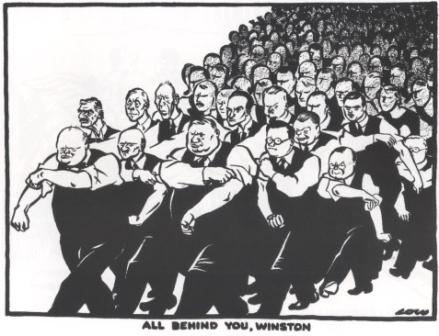
History of Cartoons: From the 17th Century to the Present Day
The first time the word cartoon was used in the sense that we know it today was in 1843 in Punch magazine. But the employment of satire, caricature, speech bubbles and the writing of captions had been around long before then. In this talk Ian tracks the early stages of cartoons (in the form of satirical prints) and how, through the works of Hogarth and James Gillray, they gradually evolved into the familiar format of today’s newspapers and magazines. Copious illustrations abound from the masters of their craft such as John Tenniel, John Leech, David Low, Vicky, Ronald Searle, Heath Robinson, Giles and, bringing it right up to date, with Gerald Scarfe, Steven Bell and Peter Brookes. Also considered are key points in the history of cartoons, such as the founding of Private Eye in 1961 and the terrible events in 2015 with the killings at the French satirical weekly magazine Charlie Hebdo.
TALKS WITH PERFORMANCE OF MAGIC TRICKS INCLUDED
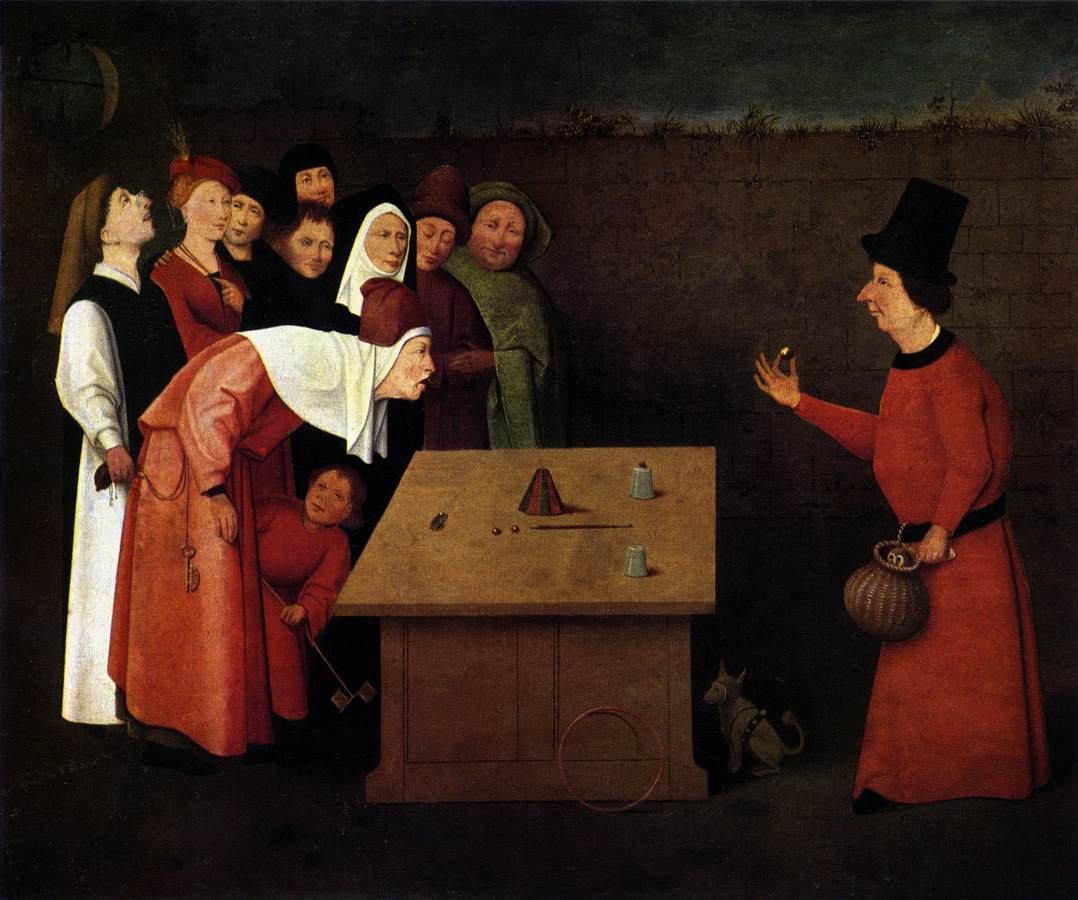
The Art of Trickery: How Magicians are seen in Paintings, Prints and Cartoons
This talk is on how magicians have appeared in art throughout the centuries, whether in paintings, satirical prints or cartoons. Early artists used the magician to symbolise the mysterious and the unknown, associating them with astrology and tarot cards. In the 16th century, Pieter Bruegel and Hieronymus Bosch produced two of the most famous and striking pictures of the conjurer performing the Cups and Balls trick. The 18th and 19th century saw a proliferation in engravings and lithographs showing the magician both indoors and on the streets. Cartoonists and satirists delighted in linking politicians with skulduggery with images of them featuring the Three-Card Trick, Vanishing illusions or pulling a Rabbit out of the Hat. In addition, to bring the illustrations alive, Ian will perform some of the tricks depicted.
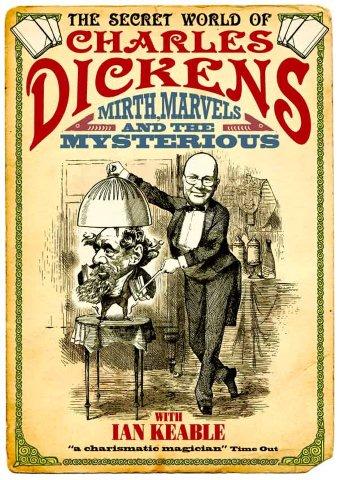
Charles Dickens, Conjuror: Playbill of his Most Famous Show
Charles Dickens was an amateur conjurer for around seven years of his life, from the time he wrote A Christmas Carol to David Copperfield. His best known performance was on the Isle of Wight in 1849; he wrote a highly amusing, and informative playbill to promote this show. This playbill, where Dickens called himself the 'Unparalleled Necromancer', provides the focus to talk about how Dickens was inspired to take up magic, which other conjurers influenced him, whether he was any good as a conjurer and how he depicted, and wrote about, magic in his own books, articles and letters. The talk includes a description of some of Dickens' tricks from his own repertoire, plus some performances by Ian. Any questions are allowed - apart from 'how do you do it!?'
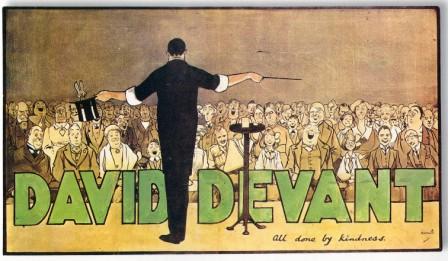
David Devant, England’s Greatest Magician: All Done with Kindness
David Devant was the first President of The Magic Circle, the first magician to be booked on a Royal Variety Show and the second person to publicly show animated films in this country. He invented many illusions and tricks that are still performed today and wrote up the methods in some of the best ever books written on magic. In this talk Ian traces Devant’s career from working with the Royal American Midgets through to his partnership in the renowned Maskelyne and Devant shows of the early 20th century. Forced to retire when he was only 52 through ill health, he ended his life in the Royal Hospital and Home for Incurables. He is considered by many to be the greatest magician this country has ever produced, his popularity perhaps best summed up in his by-line ‘All done with kindness’. Included in this talk are a couple of Devant-inspired tricks from Ian's own repertoire.
TALKS ON 18TH CENTURY HOAXES
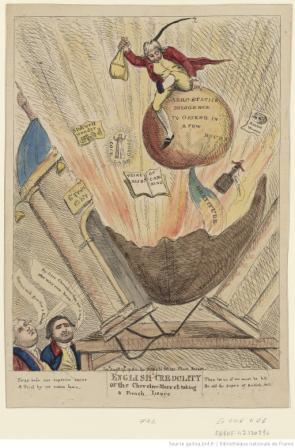
The Century of Deception: The Birth of the Hoax in the Eighteenth Century
The 1700s was a period when the people of England seemed to be especially gullible. They believed a woman could give birth to rabbits; a man could climb inside a two pint bottle and sing inside it; and where a blond-haired European could write a book claiming that he was born in Taiwan. These hoaxes weren't just written about extensively in newspapers and journals but also brilliantly and amusingly depicted by satirical artists such as William Hogarth and James Gillray. In this entertaining talk Ian demonstrates how 18th century hoaxes are memorable not only for their imaginative nature but also because of the differing motives of the tricksters.
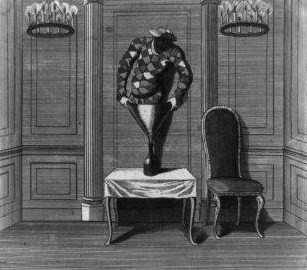
The Bottle Conjurer: Comedy and Credulity in Georgian England
Would you pay money to see a man climb inside a wine bottle? The Little Theatre in the Haymarket was a near sell-out when a newspaper advertisement in1749 claimed that a conjurer would do just that. A riot broke out when the audience, one of whom was the Duke of Cumberland, discovered they had been duped and the inside of the theatre was smashed up. The Bottle Conjurer Hoax, as it quickly came known, inspired satirical prints through to the 19th century, long after the incident itself was forgotten. Graphic artists, such as James Gillray and George Cruikshank, associated the Bottle Conjurer Hoax with the general credulity of the 18th century as well as Napoleon Bonaparte and the infamous trial of Queen Caroline for adultery by George IV in 1820. William Hogarth’s own take on it proved so controversial that the intended print, from his seemingly innocuous painting, was not produced until 35 years after his death.
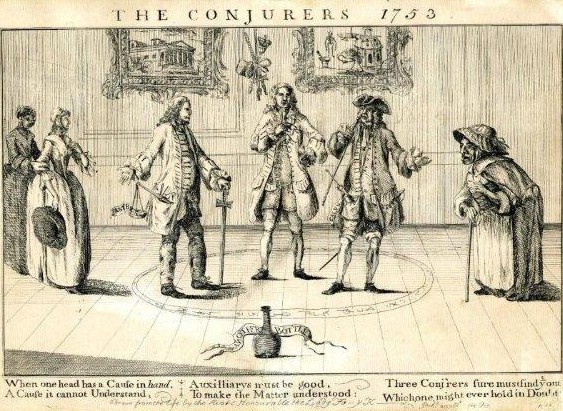
The Vanishing Maidservant: 18th Century Mystery told through Contemporary Prints
In 1753 maidservant Elizabeth Canning claimed she was kidnapped by a gypsy Mary Squires and held in captivity for 28 days with barely any food or water. Three famous men of the day, including Henry Fielding the author of Tom Jones, became embroiled in the controversy, resulting in acrimonious disputes in journals, the destruction of reputations and two court room battles. Elizabeth's story was widely reported both at the time and many years afterwards; but the question still remains as to whether she was the perpetrator of a hoax that might result in the hanging of an innocent woman; or the blameless victim of a diabolical crime? The focal point of this talk is a print owned by the speaker, called The Conjurers, 1753, which graphically depicts the conundrum at the heart of this intriguing case.
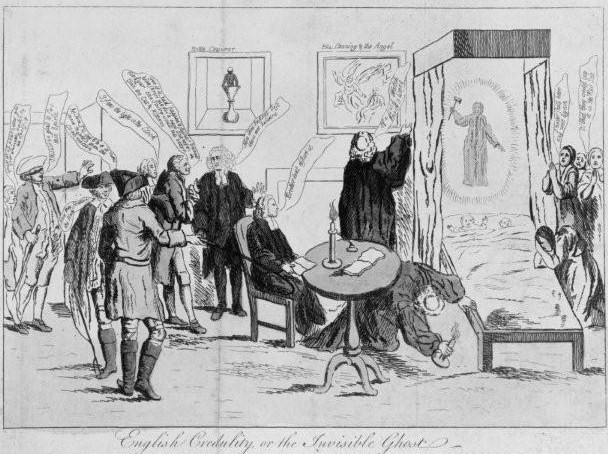
Unmasking the Cock Lane Ghost: Precursor to Victorian Spiritualism
In 1762 William Kent was accused of poisoning his partner with arsenic: the accusation was made by a ghost. Whether or not the Cock Lane Ghost was telling the truth became a media sensation, in graphic print as well as journals and pamphlets. The Mayor of London set up a committee to investigate and the resulting report was written by Samuel Johnson. The Cock Lane Ghost became the forerunner to the Victorian fascination in communicating with the dead through séances: ninety years later mediums were speaking to the spirits in the same manner. One vehement non-believer was Charles Dickens, who used his knowledge of the Cock Lane Ghost to mock the first ever Victorian spiritualist.
For more information on any of these talks, please email Ian or telephone 020 7263 0261
Everyone who attended your lecture was bowled over! We try to engage the best but do not always get it. We did yesterday and are very grateful indeed.
I thought you may like to know that the feedback from members was highly complementary. The lecture was deemed an outstanding success. There was particular praise for the superb graphics.
You received lots and lots of positive comments and it was so refreshing to have a speaker who didn't read from his notes. I wish I knew how to use PowerPoint so imaginatively!
We were all so impressed by your entertaining presentation. I can confidently say you are the best speaker we have had. I surely will be contacting you again in the future.
A note to thank you very much for your entertaining and knowledgeable talk yesterday afternoon. I have had many members congratulate me on my choice of speaker so I know they enjoyed it.
